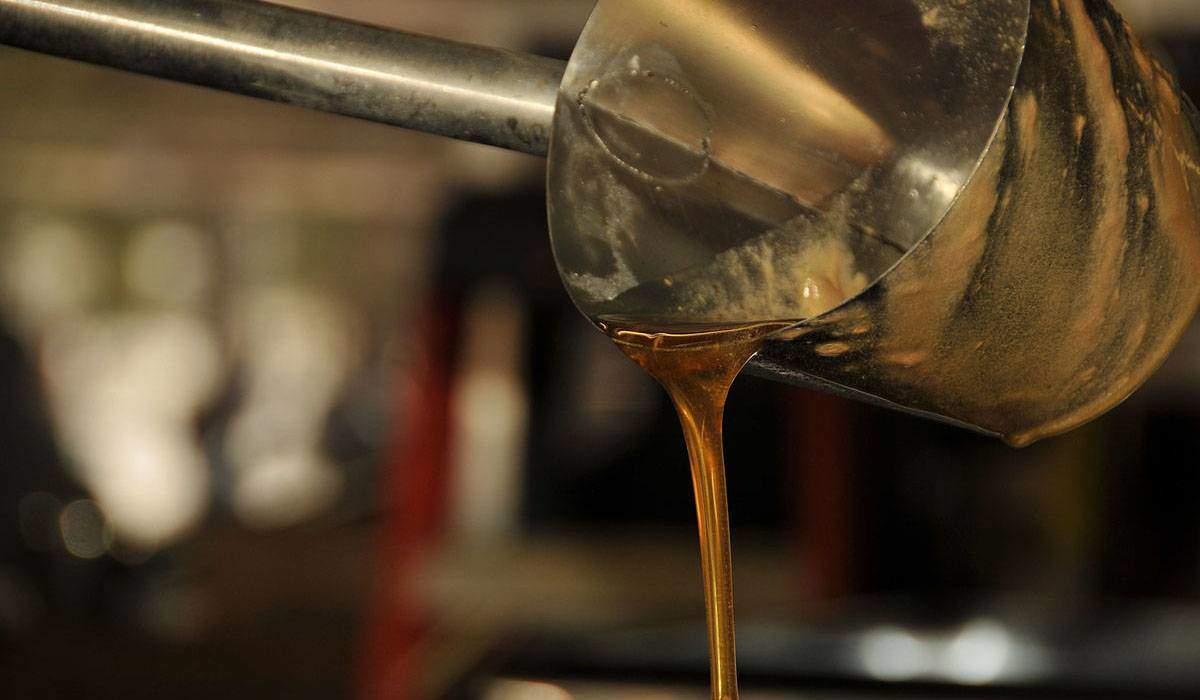The Adirondack Mountains in Upstate New York are blanketed with a forest that has been left largely untouched over the centuries. That forest is dense with sugar maple trees—the best kind from which to extract the sap that gets made into maple syrup–and long before Europeans settled on this continent, Native Americans established the process for extracting sap from the maples and turning it into that delicious syrup that so perfectly accompanies our breakfast pancakes today. The ancient maple syrup tradition continues with gusto, with the modernization one would expect. But like so many industries in so many parts of the world, climate change is presenting new challenges for this one.
To understand why, it helps to know how intricately maple syrup production depends on the four seasons. All summer and fall, maple trees in the Adirondacks produce and store sugar in their wood and roots. They then go dormant for the frigid months of winter. Come springtime, which typically means sometime in March, the air warms, the snow melts, and the trees begin to soak up water from the soil and use that to send the stored sugar up to the new buds. Maple syrup producers then “tap” the trees, drilling a hole in their trunks and placing taps in them to capture some of the sugar, or sap, which is then processed via heating to concentrate the sugar and make maple syrup. In late spring, the cycle begins again.
I spoke recently with Joseph Orefice, the director of Cornell University’s maple syrup program in Lake Placid, New York, to find out how climate change is affecting production in the Adirondacks. Orefice explained that the window of opportunity to tap trees’ sap is narrow, usually lasting no more than five weeks in the spring. Optimal tapping days are above freezing, with nights that drop below freezing. “One thing that the cold at night does is create pressure in the tree, which helps push sap up the tree,” says Orefice. “Once we start getting a lot of nights above freezing, and the days get really warm, we lose sugar content and also we start getting off flavors in our syrup.”
In other words, maple syrup producers rely on the relative predictability of the seasons to take advantage of those few weeks when maple syrup production is possible. Early thaws or late cold snaps can make their jobs difficult.
“Early thaws are a real challenge because we can’t really plan for them. We have almost 6,000 trees. You can’t [tap them] in a day, or five days, so when the weather goes from winter immediately to sugaring weather…many makers aren’t prepared,” says Orefice. “And if you tap too early, then by the time you get to prime season in March, your tap holes may have actually dried up.”
On the flip side of this, last winter the region produced a record amount of syrup, thanks to an exceptionally—and consistently—warm winter that enabled some producers to beginning tapping trees as early as January.
I asked Orefice in early April how this season’s production will stack up to previous years. “I hate to predict the weather…It’s all going to be dependent on the next two weeks.” Orefice says his operation had some success during the February warm spell, but wasn’t at full production. Some other makers were able to scramble to full production and “catch that first run,” as he puts it.
Still, this year in particular has been full of atypical weather. On February 25th, for example, temperatures reached 61 degrees; the average high for that day is 30 degrees. A week later, the high was only 4 degrees. And barely a week after that, just as the first signs of spring would typically be showing up, the skies dumped as much as 40 inches of snow on the Adirondacks. “We had the early thaw, and then we had the big snowstorm and it also got really cold [in March], so in our prime two weeks of the start of the season, we actually weren’t making anything,” says Orefice. “The biggest challenge this year is that we had a couple weeks where we’d normally get prime production, and it was just too cold.” As climate change persists, this unpredictability will only increase.
Even if a single year is successful, there are longer-term challenges to the maple syrup industry in the Adirondacks. For reasons that aren’t yet entirely clear, the sugar maple tree population has been declining. “The health of our trees has been decreasing as a general trend,” says Orefice. It’s hard to pinpoint a cause, given the lag time between the damage and the effects showing up. “A lot of times with trees, you don’t know that they’ve been damaged for five or ten years, because they live off their reserves, but they don’t replenish them.”
Possible culprits include summer droughts and early thaws followed by frosts, which can kill young leaves that are crucial to sugar production within the trees. “This can impact not only the next year but future years’ production,” says Orefice. Part of Orefice’s work over the next few years will involve getting to the bottom of the sugar maple decline, and planting enough new trees to offset the loss of older, unhealthy ones.
I followed up with Orefice last week to see how the 2017 season turned out. “While we had a boom and bust start to the season,” he wrote to me in an email, “we will hit our mark of an average crop after today’s boil—about 2,000 gallons of Grade A syrup.” It’s a welcome strong finish to a season that threw a lot of curve balls. Soon, the next one begins, in all its increasing fickleness.
Related Video:





